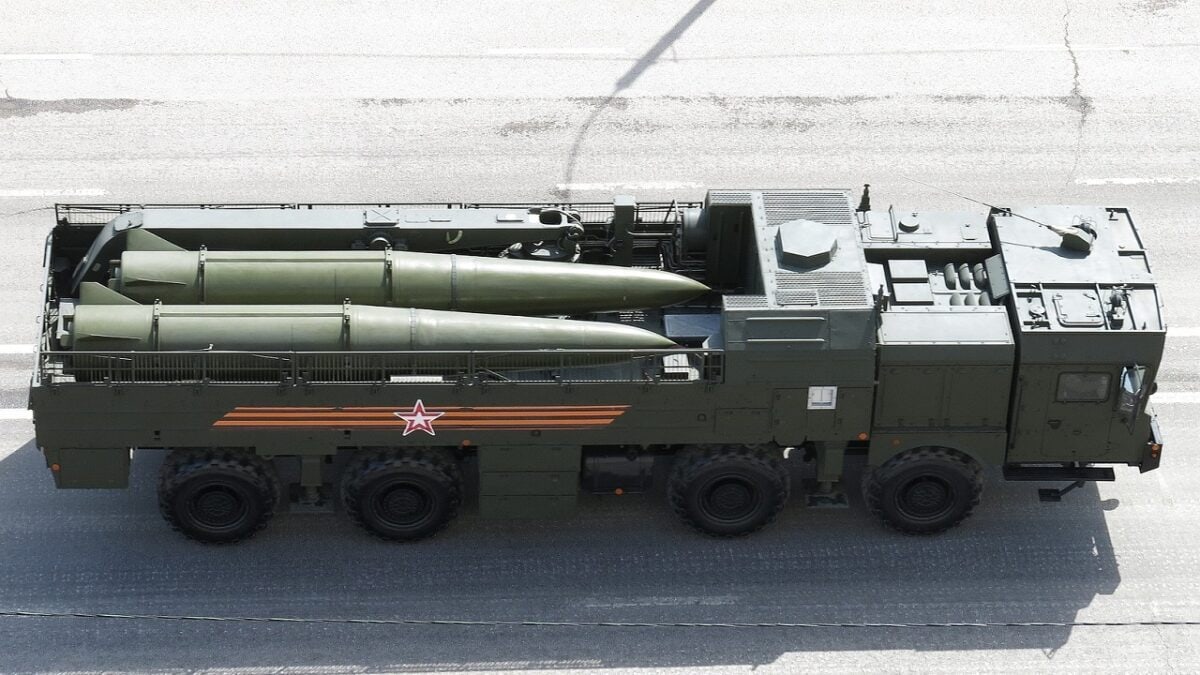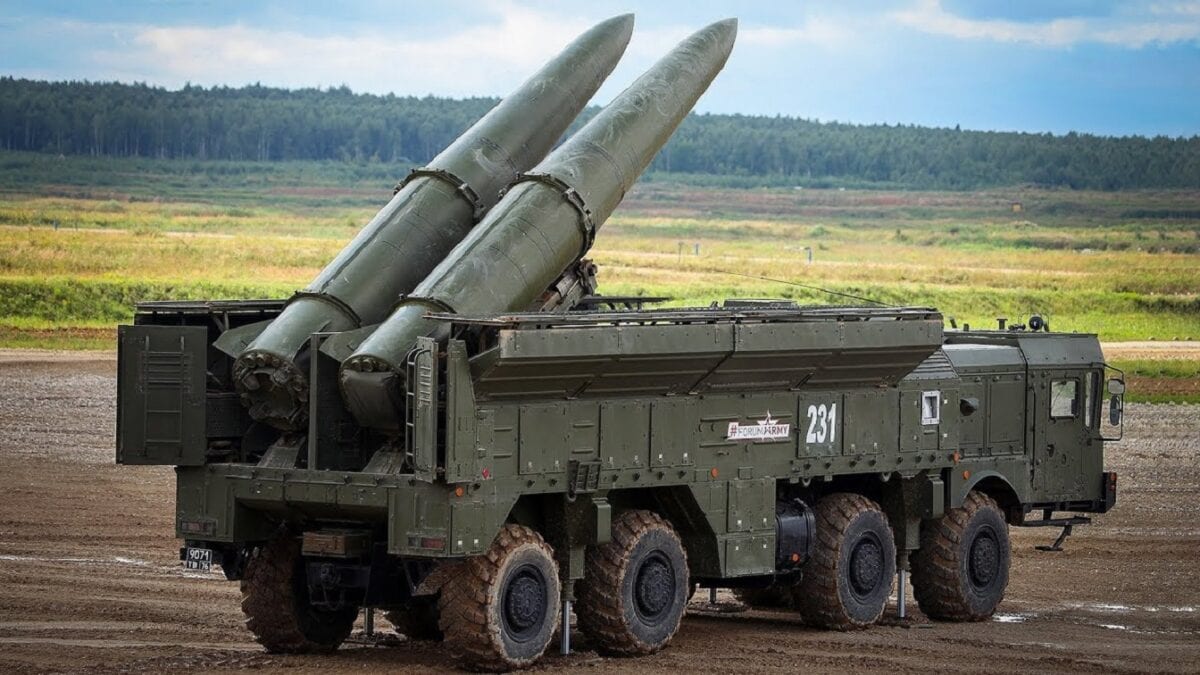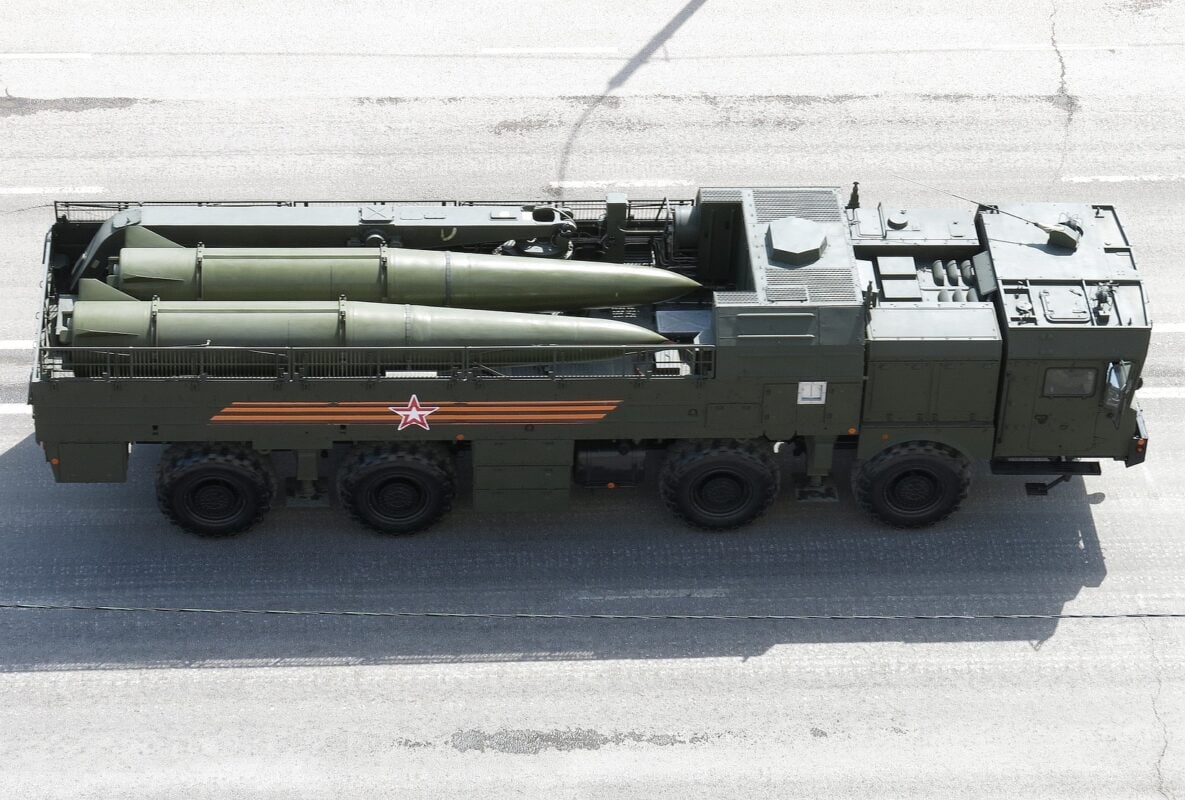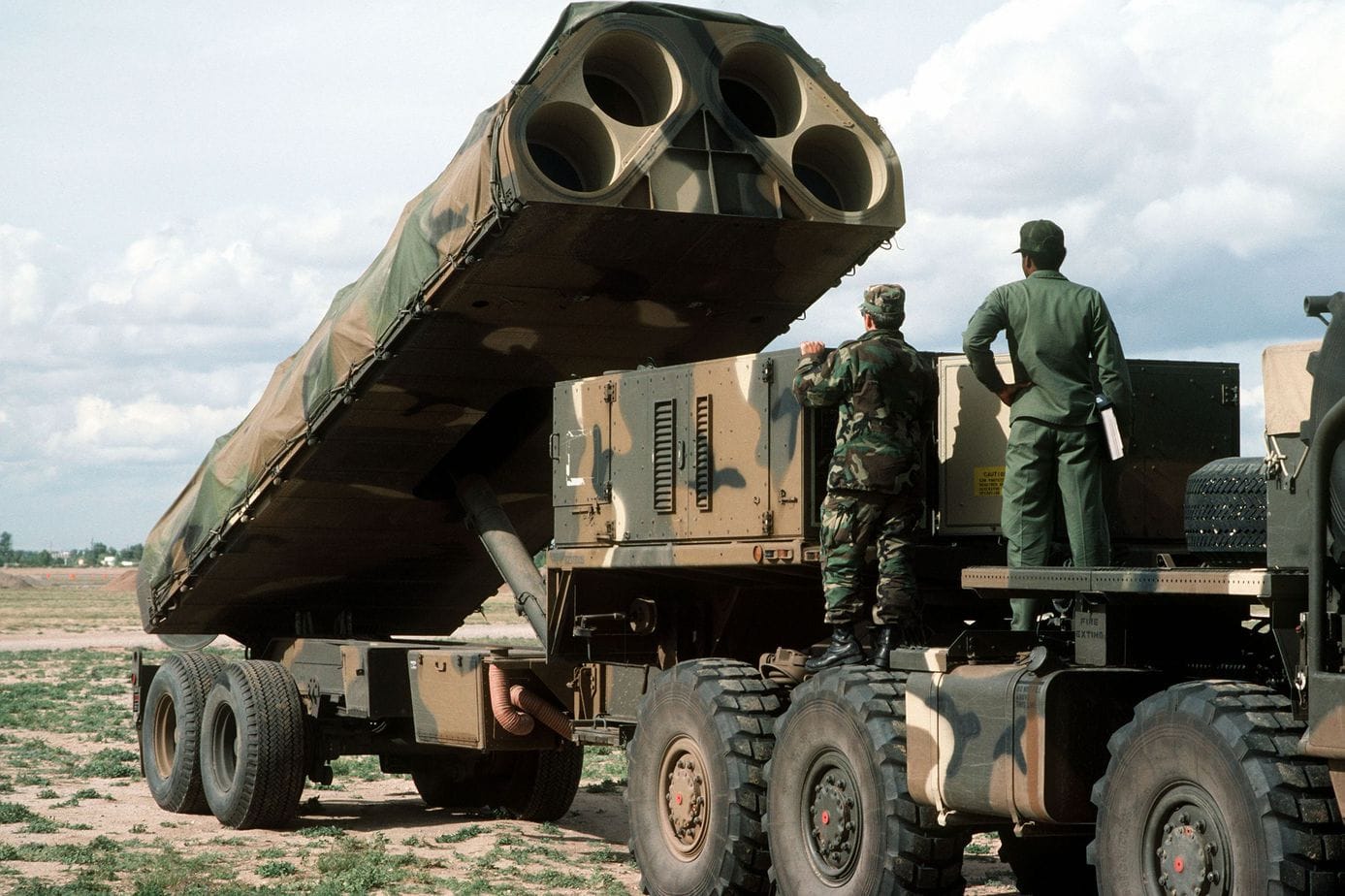Time for a new INF Treaty? In his speeches, Russian president Vladimir Putin frequently brings up a hypothetical scenario in which NATO places offensive missiles on Ukrainian soil to explain why he demands Ukraine’s guaranteed exclusion from the NATO alliance. The idea is that if based in Ukraine, those missiles could hit Moscow, just 250-300 miles away, in a surprise attack before Russia could respond.
Whether this is genuinely Putin’s primary concern, or simply a story was chosen for maximum rhetorical impact is debatable. When Putin complains about the U.S already “bringing missiles to our doorstep”, there is arguably rhetorical conflation between battlefield anti-tank missiles the U.S. is giving Ukraine, and long-distance cruise and ballistic missiles that could threaten cities and military bases hundreds of miles away.
In fact, NATO, unlike Russia, does not yet deploy any such long-range land-based missiles, though the U.S. does plan to enter such weapons into service in the 2020s, including Mid-Range Capability Tomahawk missiles, and intermediate-range hypersonic Dark Eagle missiles.
But even once they’re operational, there’s a second obstacle—finding countries willing to host these missiles could prove politically difficult. Such weapons are certainly not going to Ukraine in the near future for many reasons.
Any long-distance missiles that do pop up in Ukraine are likely to be developed by Ukraine itself, notably its program for the Grom-2/Hrim-2 medium-range missile.
Nonetheless, Putin’s rhetoric does echo concerns that animated the older Intermediate-Range Nuclear Forces Treaty (INF). That didn’t affect intercontinental-range missiles or air- or sea-based nukes but did ban medium-range (310 to 3,420 miles) land-based nuclear weapons that threatened prompt strikes on European capitals, destabilizing security for both NATO and the Soviet Union.
After enduring three decades, in 2019 first the U.S. and then Russia exited the INF treaty. The Trump administration cited Russia’s violation of the treaty by secretly deploying the ground-launched nuclear-capable 9M729 Novator cruise missile with a range believed to exceed 1,000 miles. However, Washington was also motivated to remove legal constraints to deploying new missiles to compete with China’s burgeoning short-to-medium range missile arsenal including weapons like the ‘carrier-killer’ DF-21D and dual-capable DF-26 IRBM missile.
Biden’s pitch to Moscow
Since the beginning of Moscow’s buildup current buildup in the fall of 2021, the Biden administration has suggested it would revisit arms control related to medium-range missiles to assuage Putin’s expressed concerns.
When on February 2 the Spanish newspaper El Pais published letters of negotiating positions sent by Washington and NATO to Moscow (and likely leaked by the Kremlin), it confirmed that both parties were proposing what they had suggested publicly, a sort of neo-INF treaty
Though mentioning U.S. grievances about the Iskander-K, the U.S. letter states: “The United States…is prepared to begin discussions with the SSD [Strategic Stability Dialogue] on arms control for ground-based intermediate and shorter-range missiles and their launchers.”
The NATO document also urges Russia to work on a new INF-style arms control regime.
The possibility that Biden might resurrect the INF treaty killed by Trump has already elicited a letter in opposition from Republican politicians. However, it’s likely a neo-INF treaty might be crafted to restrict only weapons deployed within range of Europe, freeing Washington and Moscow to deploy operational missiles in the Pacific.
That could reduce mutual paranoia and defense expenditures linked not only to deploy missiles in Europe, but additional missile defenses to counter them. One complication, though, is that Pacific-based intermediate-range missiles could still threaten targets on mainland Russian and U.S. soil, albeit not the most populous parts.
Missile defense inspections: ‘You show me yours and I’ll show you mine’
For over a decade, Moscow has vehemently objected to the deployment of U.S. Aegis Ashore missile defense systems in Poland and Romania, arguing the system’s Mark 41-type launchers could also be used offensively to launch Tomahawk land-attack missiles that could deliver prompt strikes on targets in Russia.
Again, whether that is Moscow’s real concern, or whether it fears those missile defenses might curb its nuclear deterrence capability, is debatable.
But Biden is offering to take Moscow’s concerns at face value by offering: “…transparency mechanism to confirm the absence of Tomahawk cruise missiles at Aegis Ashore sites in Roania and Poland, provided Russia offers reciprocal transparency measures on two ground-launched missiles bases of our choosing in Russia.”
That implies giving Russian inspectors access to the Aegis Ashore sites (contingent on Polish and Romanian agreement) to verify that they are not equipped for offensive missions. That’s offered in exchange for reciprocal U.S. access to two “ground-launched missile bases” in Russia.

Iskander Transport Loader 9T250

Iskander Missiles. Image Credit: Creative Commons.

Iskander Transport Loader 9T250
Washington and NATO want to talk about Russia’s Iskander missiles in Kaliningrad.
Russia retains a sliver of territory on the Baltic ocean called Kaliningrad which is now hosting Iskander ballistic missiles capable of both nuclear and conventional attacks. From that position, it can launch short-range missiles that could strike Warsaw or Berlin in single-digit minutes.
As Putin has complained about the hypothetical possibility of NATO missiles being deployed to Ukraine where they could hit Moscow within minutes, NATO sees the crisis as an opportune time to express its own objection with Russia’s situating of distinctly non-hypothetical nuclear-capable prompt strike capability in central-eastern Europe.
Washington and NATO would like arms control for tactical nukes and “novel” weapons too.
Both the NATO and Washington letters hammer home the idea that they’d like to extend the existing arms control measures to shorter-range nuclear weapons that aren’t “strategic weapons” covered by the START treaty.
In principle, that absolutely should be a win-win, allowing Russia and the West to save billions by mutually further downsizing their nuclear arsenals without sacrificing deterrence.
However, Russia has around 2,000 non-strategic nuclear weapons useable by all kinds of platforms (ships, bombers, truck-launchers), while the U.S. deploys only around 230, all air-dropped gravity bombs. Furthermore, the ‘novel’ weapons developed by Russia refer to new capabilities such as intercontinental-range nuclear torpedoes, and hypersonic missiles that the U.S. doesn’t yet operationally deploy.
Therefore, while instituting arms control over these weapons would be a great thing for the world, Moscow might perceive them as a relative loss of power, even if the measures placed the same restrictions on the U.S.’s smaller non-strategic arsenal.
NATO wants to discuss arms control in space—and cyberspace.
Russia and China have been eager to create an arms control regime in space, perhaps due to the perception of superior U.S. space-based capabilities.
Obligingly, paragraph 9 of the NATO documents suggest “consulting on ways to reduce the threat to space systems, including through efforts to promote responsible behavior in space.”
It specifically refers to a recent Russian anti-satellite test that created orbital debris that put the International Space Station in serious danger, almost recreating a plot point in the film Gravity. It furthermore calls for “consulting on ways to reduce threats in the cyber domain…and all states desisting from malicious cyber activities.”
The NATO letter also calls for “Promoting free, open, peaceful, and secure cyberspace by consulting on ways to reduce threats in the cyber domain…and all states desisting from malicious cyber activities.”
This is an indirect request that Moscow call to heel cyberwarfare units like Cozy Bear which have liberally targeted the U.S., NATO, and especially Ukraine during and before the current crisis.
As cyber warfare has become such a prominent tool in Moscow’s arsenal, it would likely take serious concessions for it to agree to curb its employment of capabilities it routinely denies using in the first place.
Notably, the U.S. letter doesn’t bring up either space or cyber arms control. Some commentators argue the U.S. fears any legal constraints on space and cyber agreed to with Russia and China might only end up constraining the U.S., given China and Russia’s recent testing of anti-satellite weapons, potentially weaponizable inspection satellites, and orbital nuclear weapons.
Overall, if Putin genuinely fears that Ukraine could become a base for NATO medium-range missiles, then Biden’s offer of a revived and revised INF treaty could help address those fears. However, if that issue is simply a cover for some other underlying concern—withdrawal of international troops from Eastern Europe, or Ukrainian economic integration with Russia over Europe—then more robust arms control may not entice Putin nearly as much.
A companion article further analyzes other aspects of U.S. negotiating positions as exposed in the El Pais leak pertaining to regulating force posture, exercises, and patrols over international waters and airspace.
Sébastien Roblin writes on the technical, historical, and political aspects of international security and conflict for publications including the 19FortyFive, The National Interest, NBC News, Forbes.com, and War is Boring. He holds a Master’s degree from Georgetown University and served with the Peace Corps in China. You can follow his articles on Twitter.

